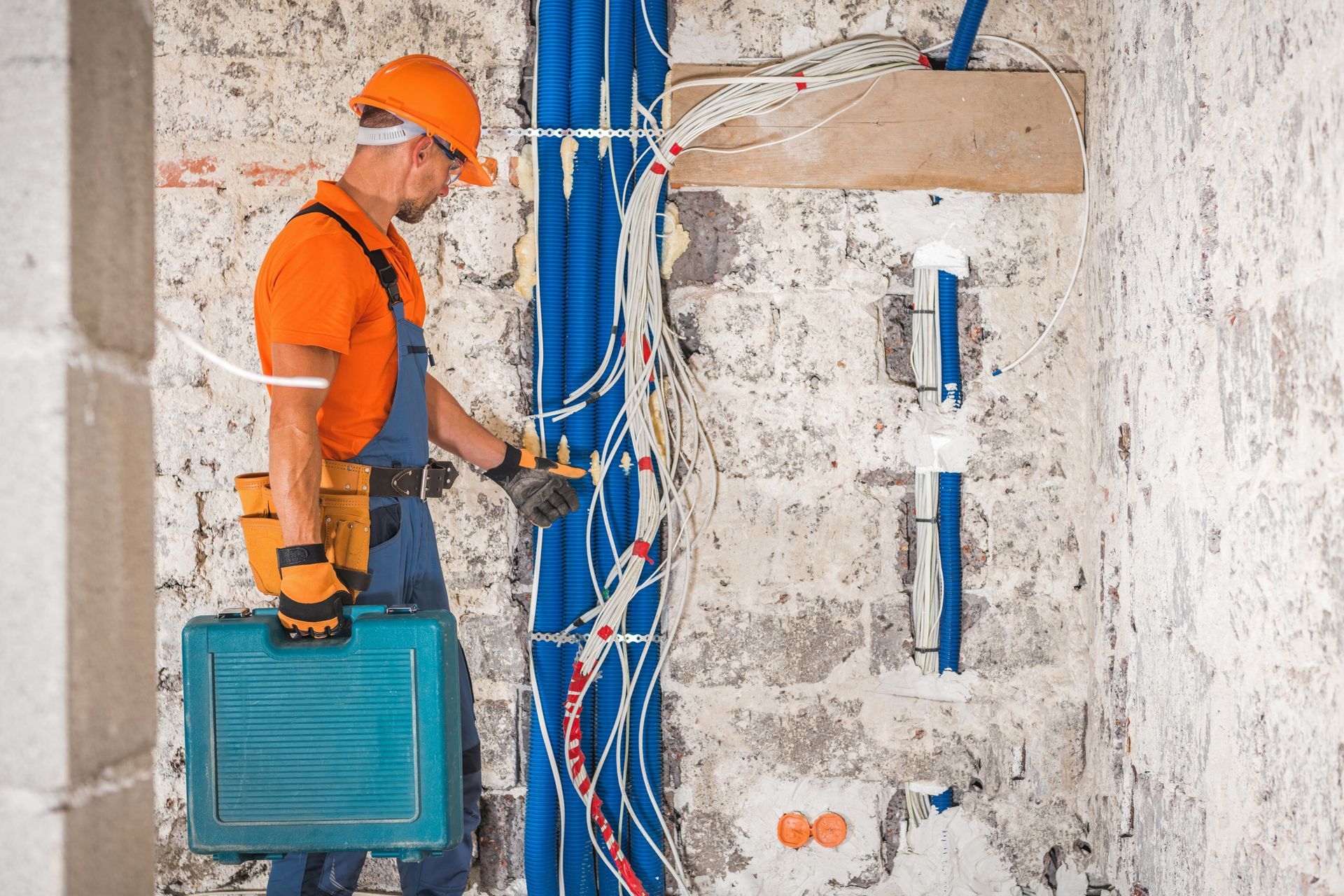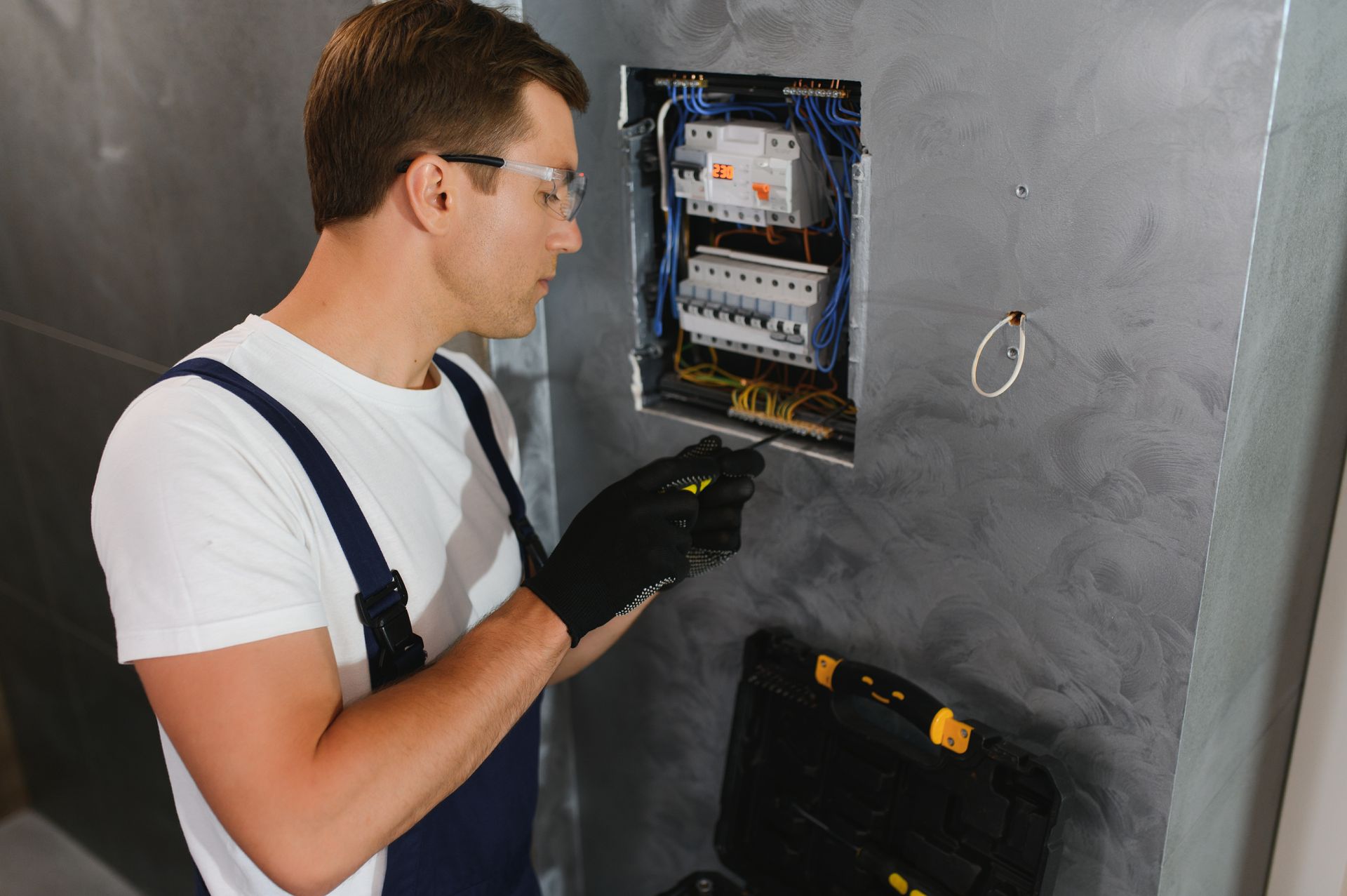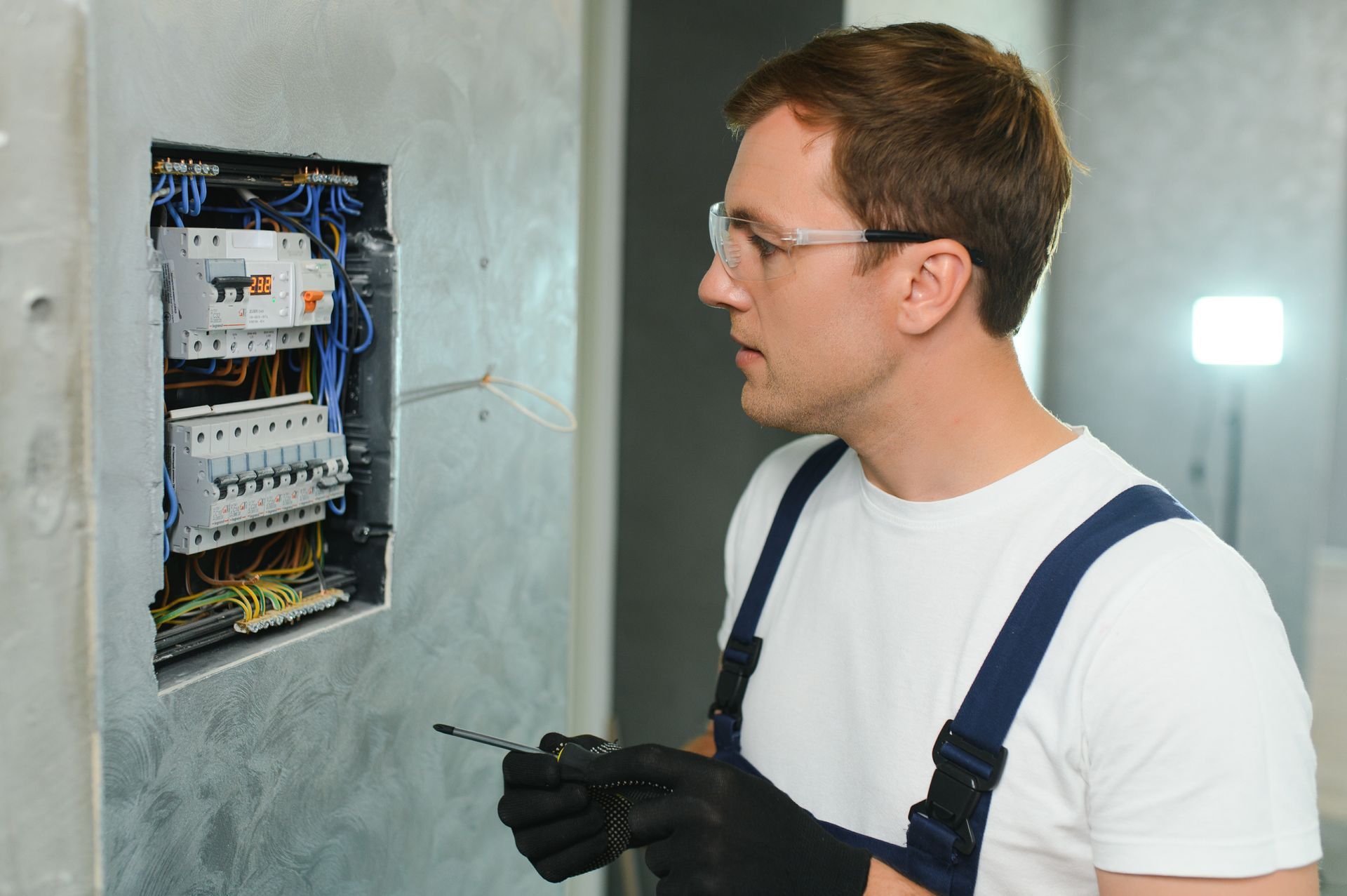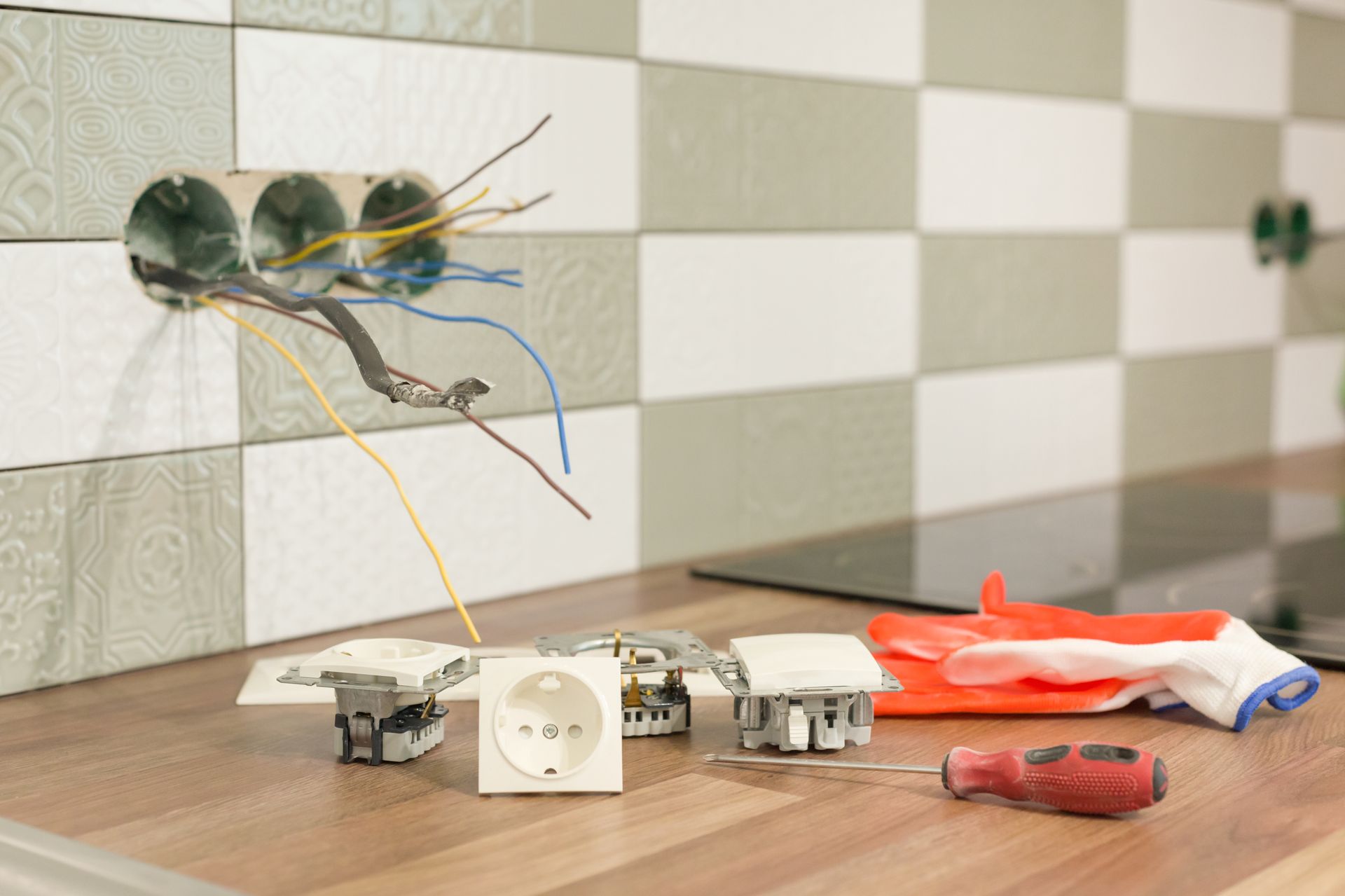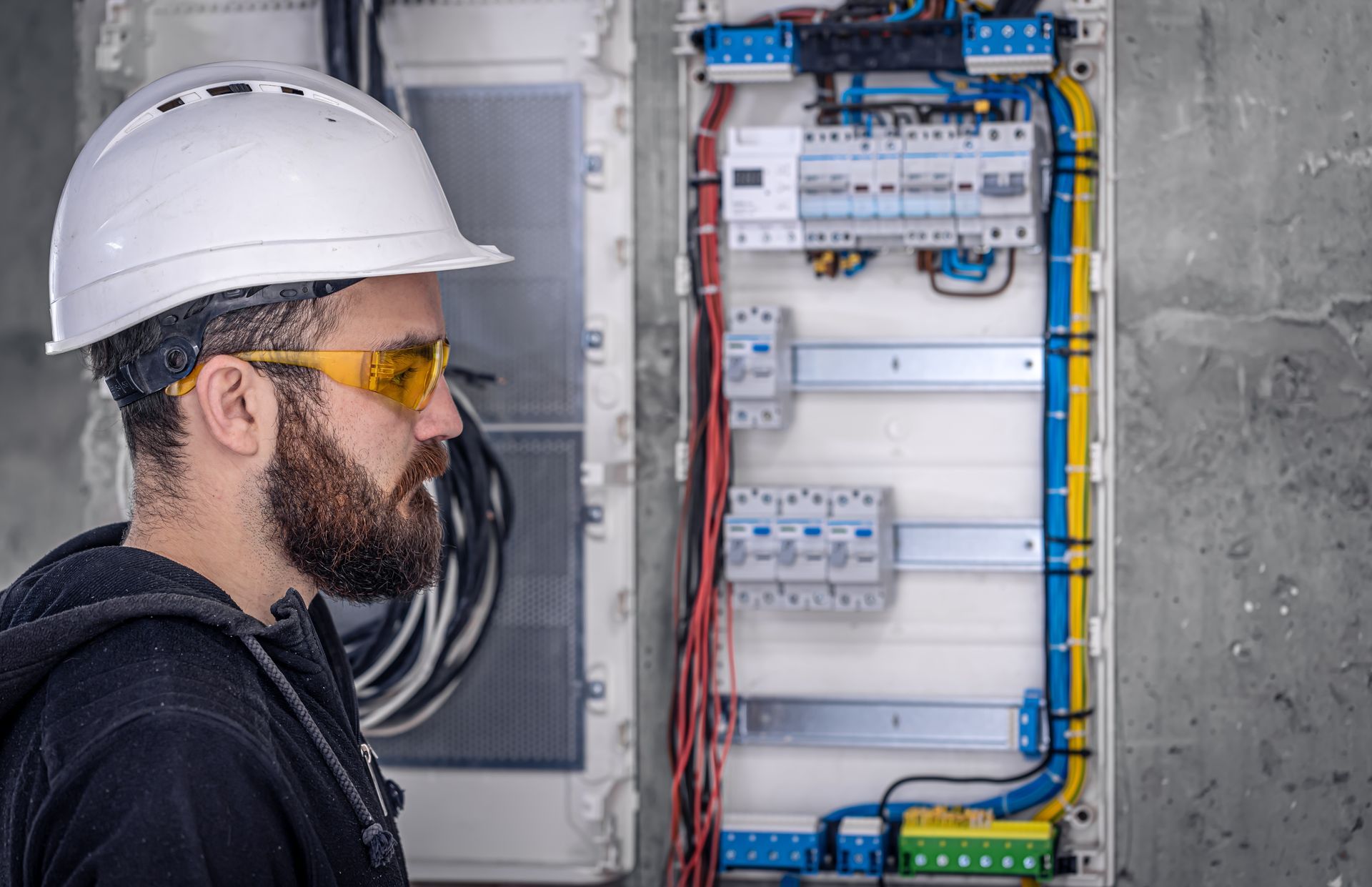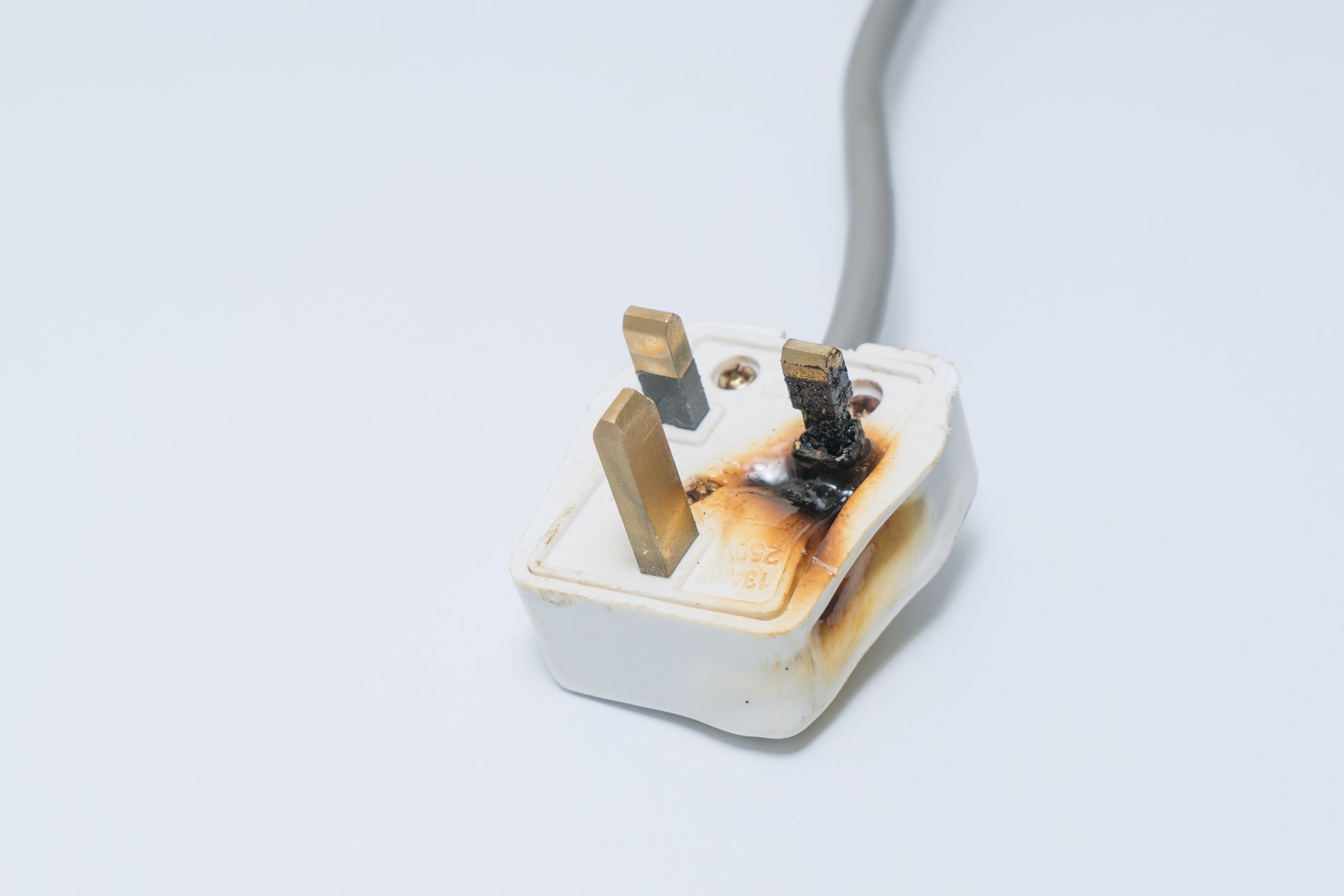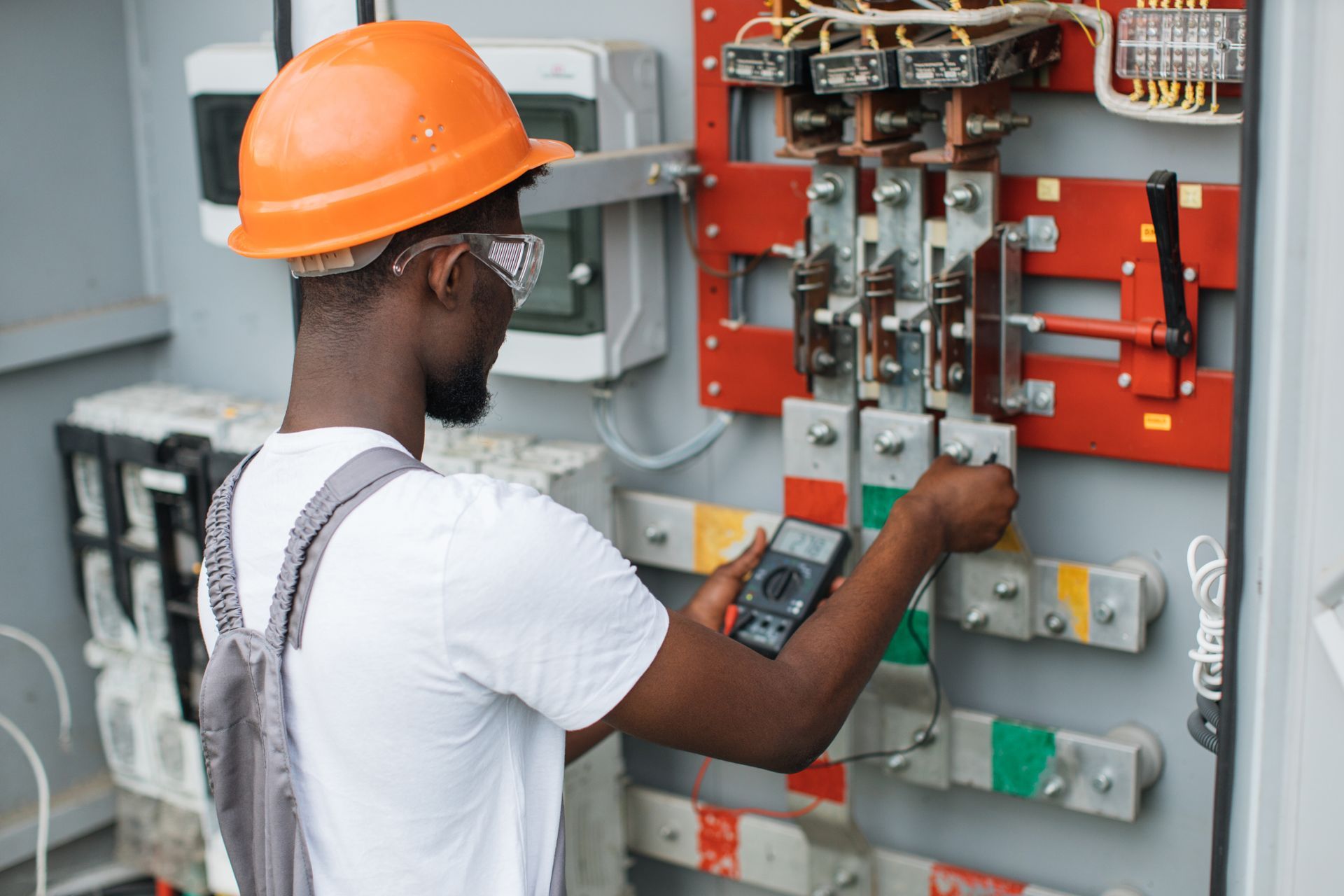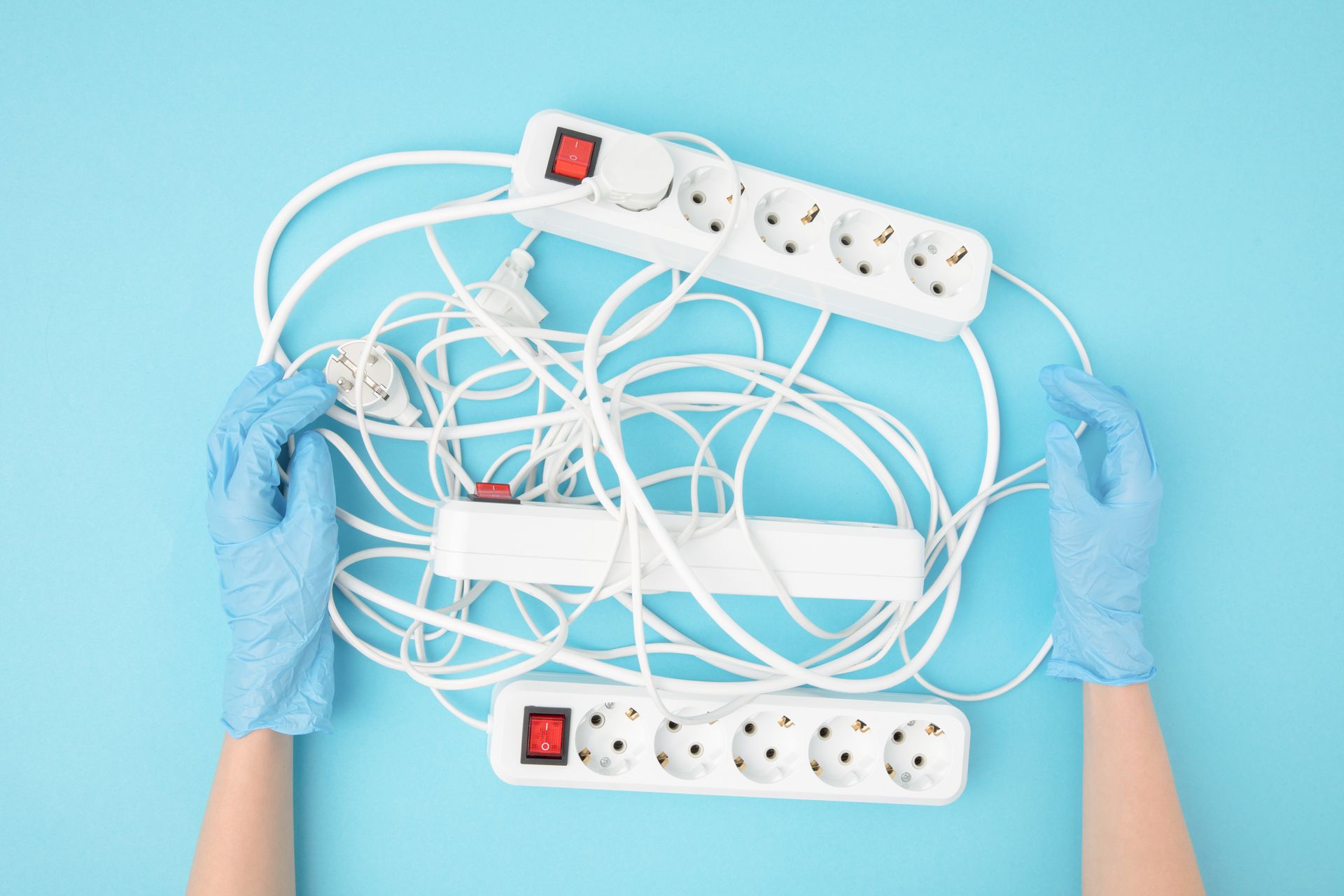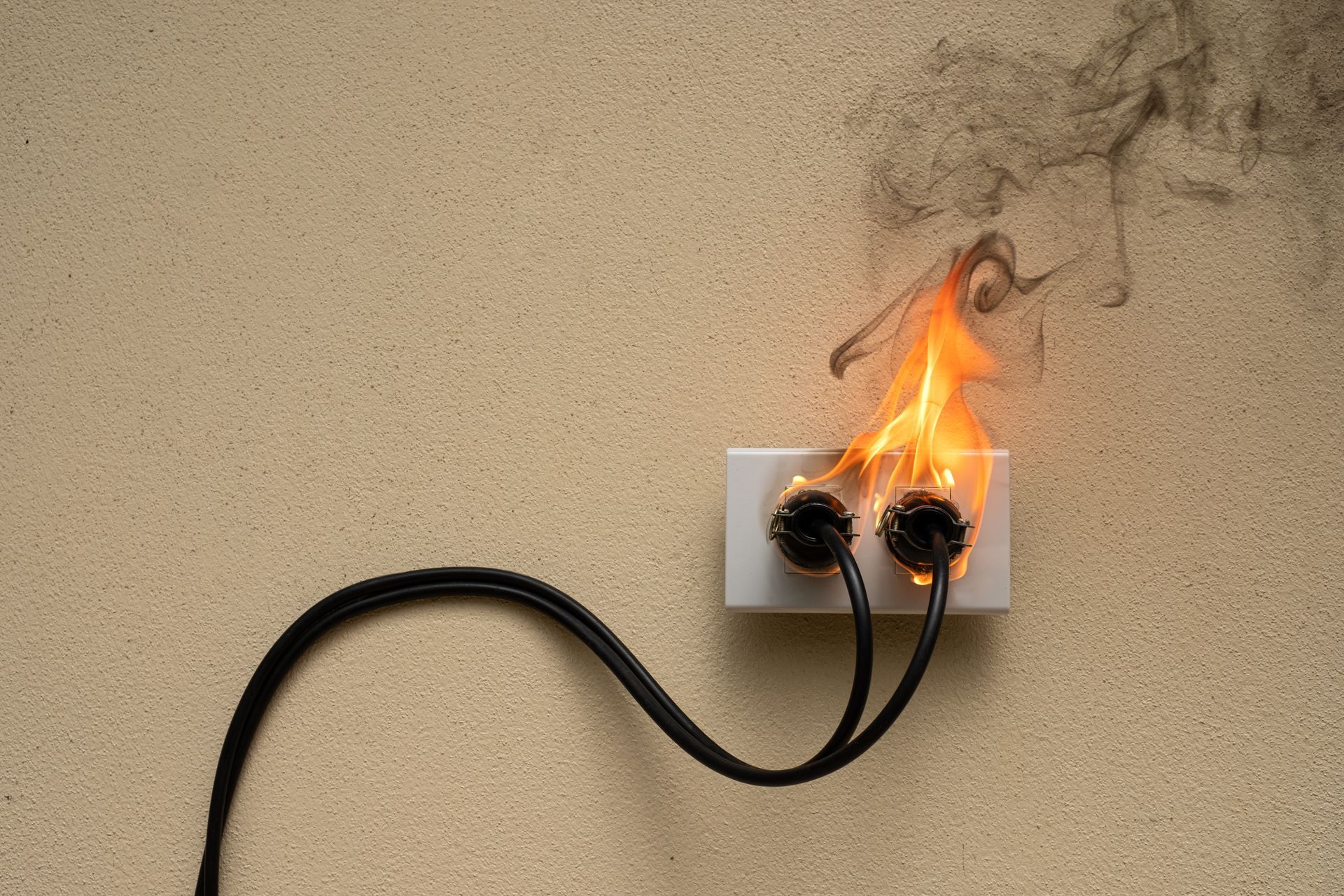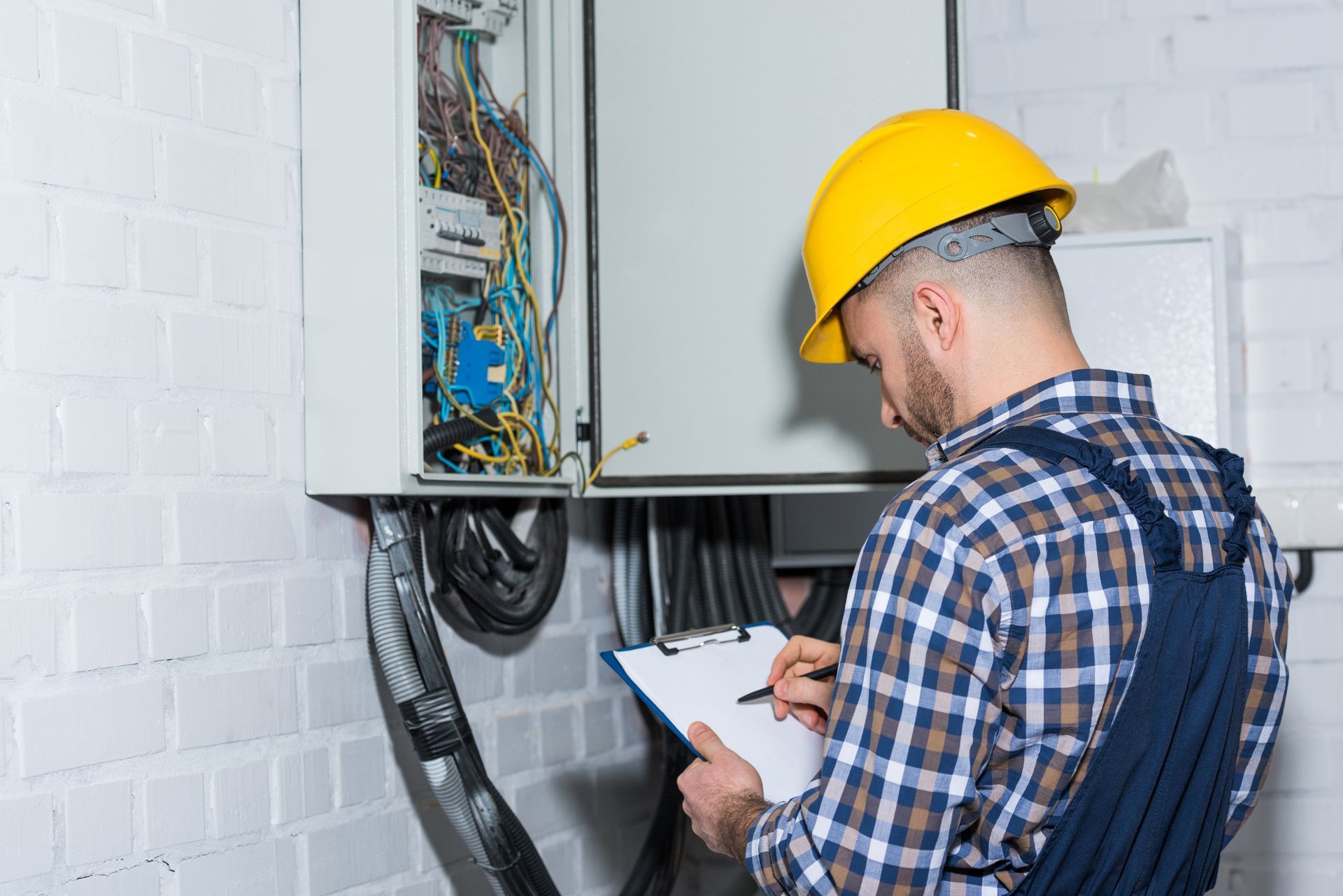Protecting Kids and Elderly Family Members from Electrical Hazards at Home
Protecting Kids and Elderly Family Members from Electrical Hazards at Home
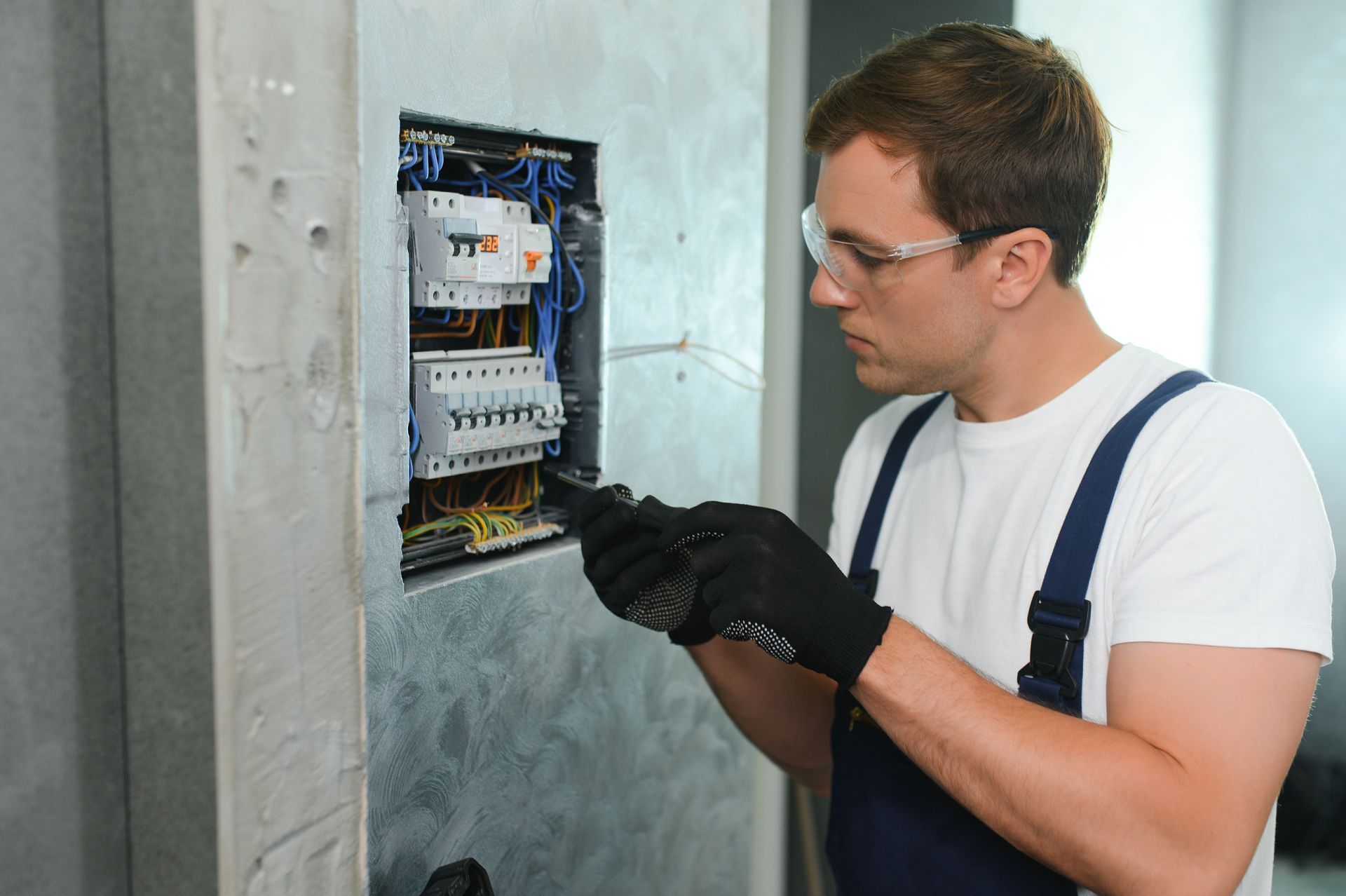
Electrical safety is crucial in any household, especially for families with young children and elderly loved ones who may be at higher risk of accidents. By identifying potential hazards and implementing preventative measures, you can help create a safe environment that protects everyone from electrical risks. Here’s how to safeguard your home for children and the elderly.
1. Use Tamper-Resistant Outlets
Exposed outlets can be a temptation for curious kids. Tamper-resistant outlets are an effective way to prevent accidental shocks and short circuits.
- Install Tamper-Resistant Receptacles (TRRs): These outlets come with built-in shutters that block access to anything other than a plug, providing an extra layer of safety.
- Add Outlet Covers: Outlet covers are an easy-to-install solution that keeps small fingers and objects away from electrical sources.
2. Keep Cords Organized and Secured
Electrical cords pose tripping and shock hazards, especially for the elderly, who may be more prone to falls. Keeping cords neat and secure can help minimize risk.
- Use Cord Organizers and Covers: Tuck cords out of sight or secure them along walls to reduce exposure.
- Secure Excess Length: Loop or tie excess cord length to prevent any trips or accidental yanks that could damage appliances.
- Inspect for Damage: Regularly check cords for fraying or exposed wires, which can create fire and shock hazards. Replace any damaged cords immediately.
3. Avoid Overloading Outlets
Plugging too many devices into a single outlet can overheat the circuit, increasing the risk of a fire.
- Distribute Devices Across Outlets: Avoid plugging multiple high-powered devices into a single outlet or power strip.
- Use Surge Protectors: Surge protectors prevent electrical overload and add a layer of protection for sensitive electronics.
- Educate on Proper Usage: Make sure older family members understand the importance of not overloading outlets, especially in high-use areas like kitchens and living rooms.
4. Install Ground Fault Circuit Interrupters (GFCIs)
GFCIs are designed to prevent electric shock in areas where water and electricity are close together, like bathrooms, kitchens, and outdoor outlets. These devices detect imbalances in electrical flow and cut off power immediately to reduce risk.
- Install in High-Risk Areas: Bathrooms, kitchens, and outdoor outlets should all have GFCIs to reduce the chance of shock.
- Test Monthly: GFCIs should be tested regularly to ensure they’re working properly. Just press the “test” button to check; if it doesn’t cut the power, it may need replacement.
5. Set Up Smoke Detectors and Fire Extinguishers
Electrical fires can start without warning, so it’s essential to have fire safety equipment that provides alerts and protection.
- Place Smoke Alarms in Key Areas: Smoke alarms should be installed in bedrooms, hallways, and common areas to ensure early detection of any fires. Make sure elderly family members can hear them clearly.
- Keep Fire Extinguishers Handy: Having a fire extinguisher near high-risk areas, like kitchens and laundry rooms, can help you quickly contain small fires. Teach all family members how to use it effectively.
- Replace Batteries Regularly: Replace smoke detector batteries at least once a year and test them monthly to ensure they’re functional.
6. Supervise Electrical Device Usage
Children and the elderly might not fully understand the risks involved with using electrical devices. Providing guidance and setting up safe usage practices is key.
- Educate on Safe Handling: Teach children never to touch cords or outlets with wet hands and show elderly family members the safe way to use appliances.
- Avoid Portable Heaters and Heavy Appliances in Unsupervised Areas: Portable heaters, toasters, and other heavy appliances should be used only under supervision, as they can overheat and cause fires.
- Unplug When Not in Use: Remind everyone to unplug appliances, such as irons and hairdryers, after use to reduce fire risk.
7. Use Child-Proof Power Strips and Extension Cord Covers
Power strips and extension cords can be dangerous, especially when left in easily accessible areas. Child-proof strips and covers keep little hands away from these high-risk zones.
- Choose Safety Power Strips: Opt for power strips with safety covers that keep sockets hidden when not in use.
- Secure and Conceal: Keep power strips out of reach of children and in locations that are unlikely to be tripping hazards for the elderly.
8. Consider Circuit Mapping for Enhanced Safety
Circuit mapping provides a clear understanding of your home’s electrical system, allowing you to identify any weak points and ensure the entire system is up-to-date and safe.
- Regularly Inspect Electrical Panels: Outdated or improperly labeled panels can be a major hazard. Circuit mapping by professionals, like TraceTech Solutions, gives you insight into your home’s wiring and identifies areas that need improvement.
- Identify Overloaded Circuits: Mapping helps ensure that circuits are balanced and not overloaded, minimizing the risk of short circuits and fires.
- Locate Critical Areas: If an emergency were to happen, circuit mapping allows you to act quickly by knowing the exact location of switches and panels.
9. Install Night Lights for Easy Navigation
The elderly are especially at risk for trips and falls when navigating in low-light conditions. Night lights make it safer to move around the home, reducing the chance of bumping into electrical outlets or devices.
- Place in Hallways and Bedrooms: Plug-in night lights in hallways, bedrooms, and bathrooms ensure safe movement.
- Use Low-Heat Options: LED night lights are energy-efficient and emit minimal heat, reducing fire risk.
10. Educate Your Family on Electrical Safety
Awareness is one of the best defenses against electrical hazards. Take time to educate both children and elderly family members about the importance of electrical safety and the simple steps they can follow to stay protected.
- Teach Children about Electrical Safety Rules: Help kids understand the importance of avoiding outlets, keeping water away from devices, and the dangers of tampering with cords.
- Simplify Instructions for Elderly Family Members: Make sure elderly loved ones understand safe usage of appliances, outlet safety, and how to react in case of an emergency.
- Conduct Safety Drills: Involve the entire family in safety drills to practice how to respond to an electrical emergency, like a fire. Make sure they know the quickest route out of the house and where to find fire extinguishers.
Keep Your Home Safe with Professional Help
Electrical hazards are a serious concern, especially for households with young children and elderly members. Professional circuit mapping and regular inspections, offered by TraceTech Solutions, can ensure that your home’s electrical system is safe and up-to-date. With expert insights and preventative measures, you can create a safer environment that keeps everyone protected from the potential dangers of electrical hazards.
Final Thoughts
Keeping kids and elderly family members safe from electrical hazards requires both preventative action and education. By following these steps, you’re not only making your home safer but also giving peace of mind to everyone in the household. From installing tamper-resistant outlets to using circuit mapping, these efforts go a long way in reducing risks and creating a home where everyone can feel secure.


